Abstract
OBJECTIVE--To present recent trends in sexually transmitted diseases (STDs) in France and to estimate the gonorrhoea incidence in 1990. METHODS--Trends were analysed from data of three surveillance systems: (1) STD clinics: number of diagnoses, (2) a sentinel voluntary General Practitioner (GP) network: mean number of acute male urethritis/week/GP, characteristics of the notified urethritis (age, presence of discharge, sexual orientation), (3) a sentinel voluntary laboratory network: mean number of gonorrhoea isolates/month/laboratory, characteristics of patients with positive isolates (sex, age, site of sampling) and of strains (PPNG and TRNG rates). To estimate the gonorrhoea incidence in France in 1990, results of a study held among a national sample of laboratories were used, combined with data from surveillance systems and specific studies. RESULTS--Decreasing trends in gonorrhoea in STD clinics and in the laboratory network as well as in acute male urethritis in the GP network have been observed since implementation of the networks in 1985. The rate of PPNG strains has regularly increased in the laboratory network to reach 14% in 1991. Data suggest that the incidence in some acute non recurrent STDs could have increased among homo/bisexual men since 1988. Chlamydia trachomatis is now the most frequent diagnosis in STD clinics. Estimation of male gonorrhoea incidence rate in France in 1990 of 74/100,000 inhabitants (15-59 years) is consistent with figures observed in England and Wales, where the age distribution is very similar. On the other hand, the estimated female gonorrhoea incidence rate of 14/100,000, which concerns only microbiologically ascertained cases, is one third in France than that observed in England and Wales. CONCLUSION--The consistency of the decreasing trends in gonorrhoea and acute male urethritis observed from the different networks reduces the possibility of a bias due to any change in notification or in prescription. Trends in Chlamydia trachomatis will be better appraised in the near future with the recent implementation of new systems. The French STD surveillance appears quite satisfactory for male infections and has been able to show a marked decrease in the incidence of some STDs in the last years. Surveillance of female STDs is to be improved, in terms of monitored diagnoses and selected health care facilities. Differences between the female gonorrhoea incidence rate observed in England and Wales and the one computed for France could be attributed to differences in contact tracing policies between the two countries or to differences in sexual lifestyles.
Full text
PDF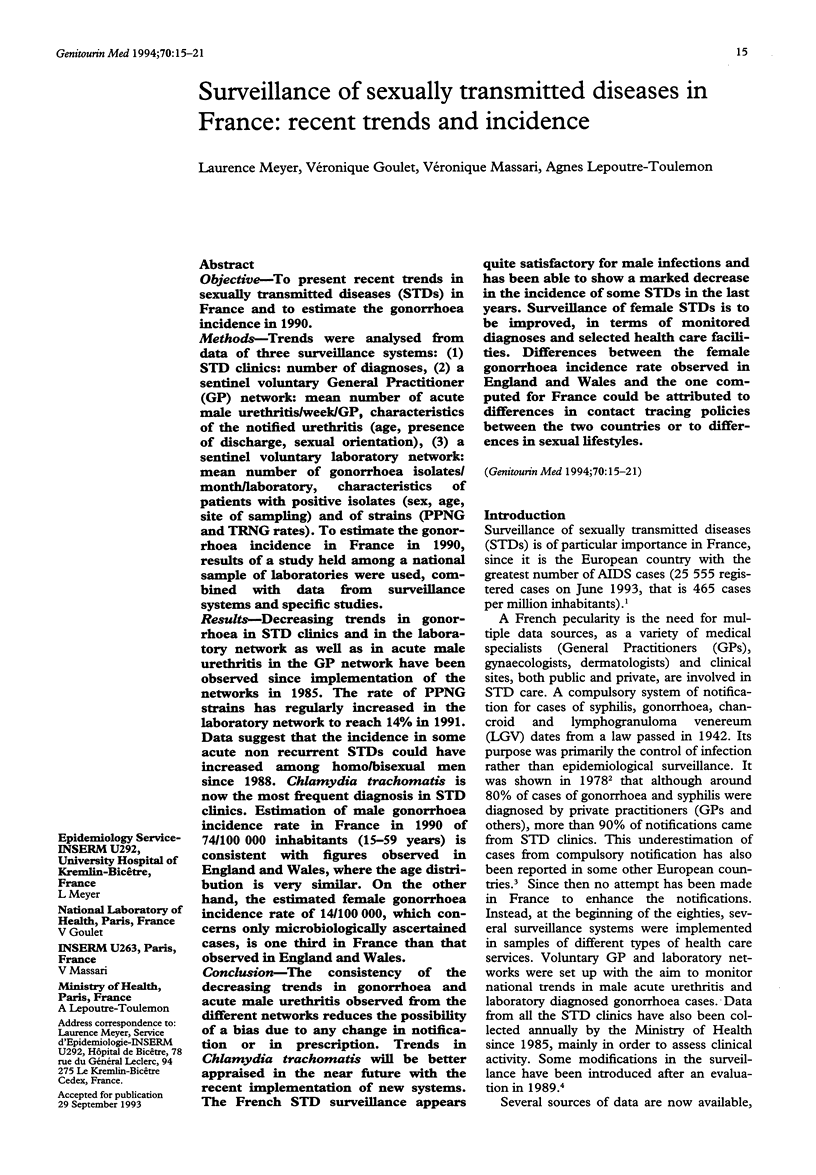
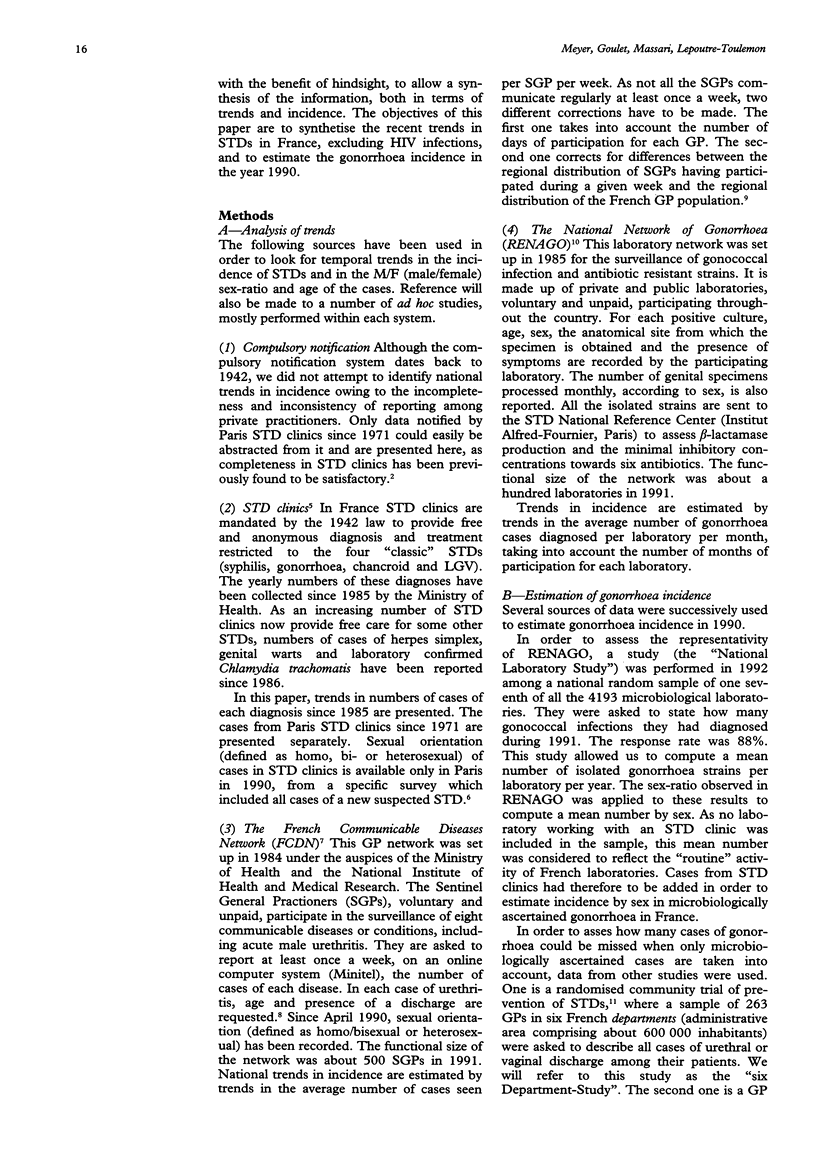
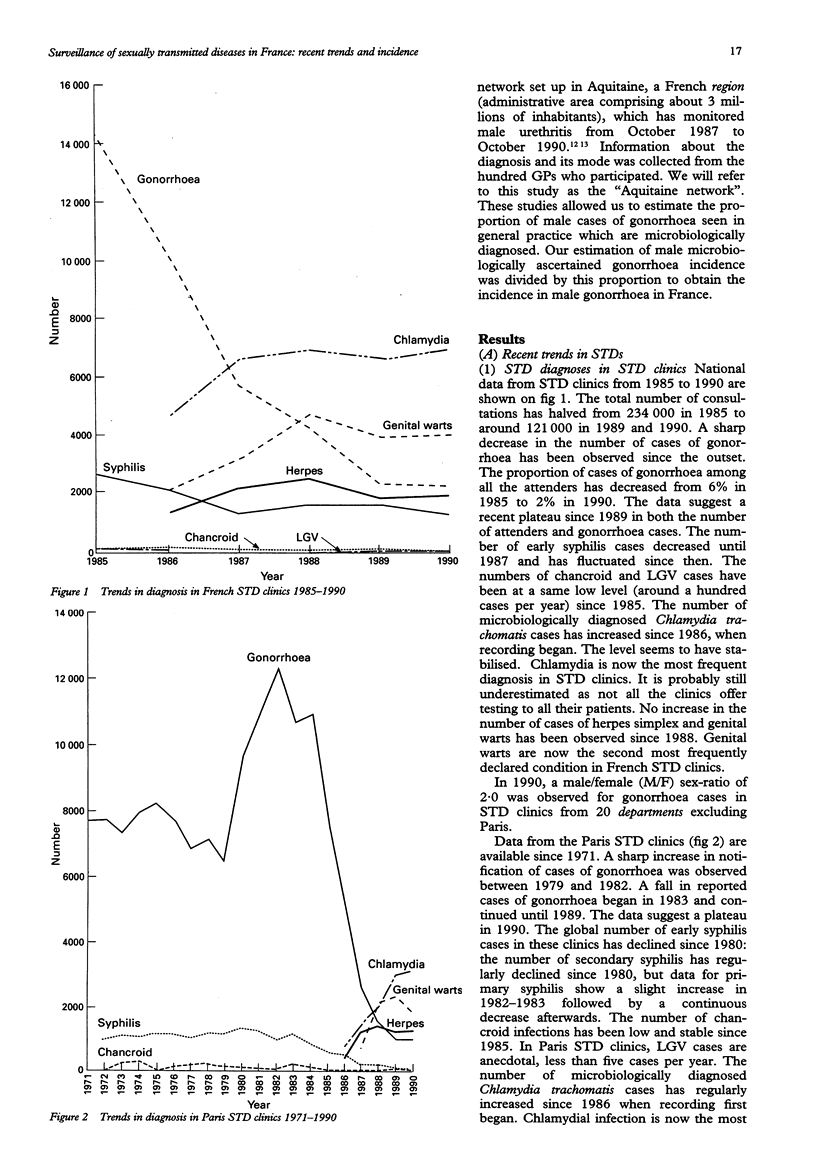
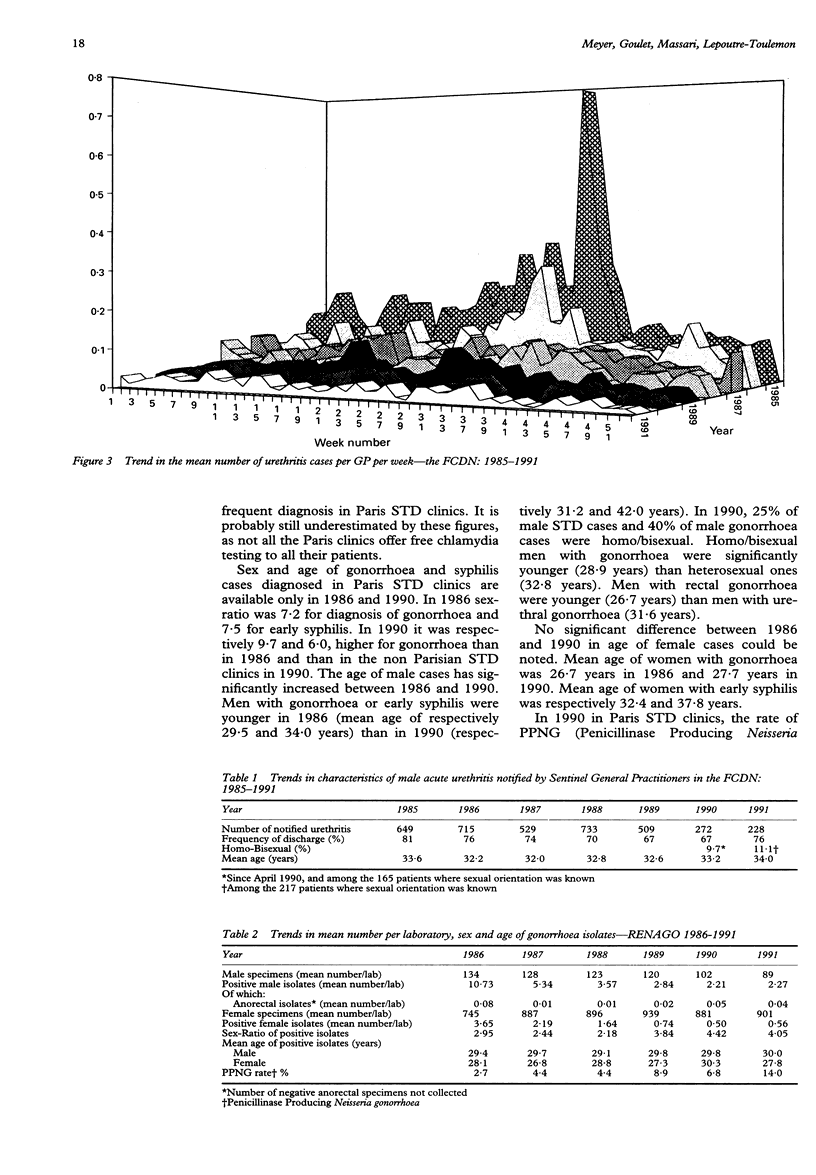
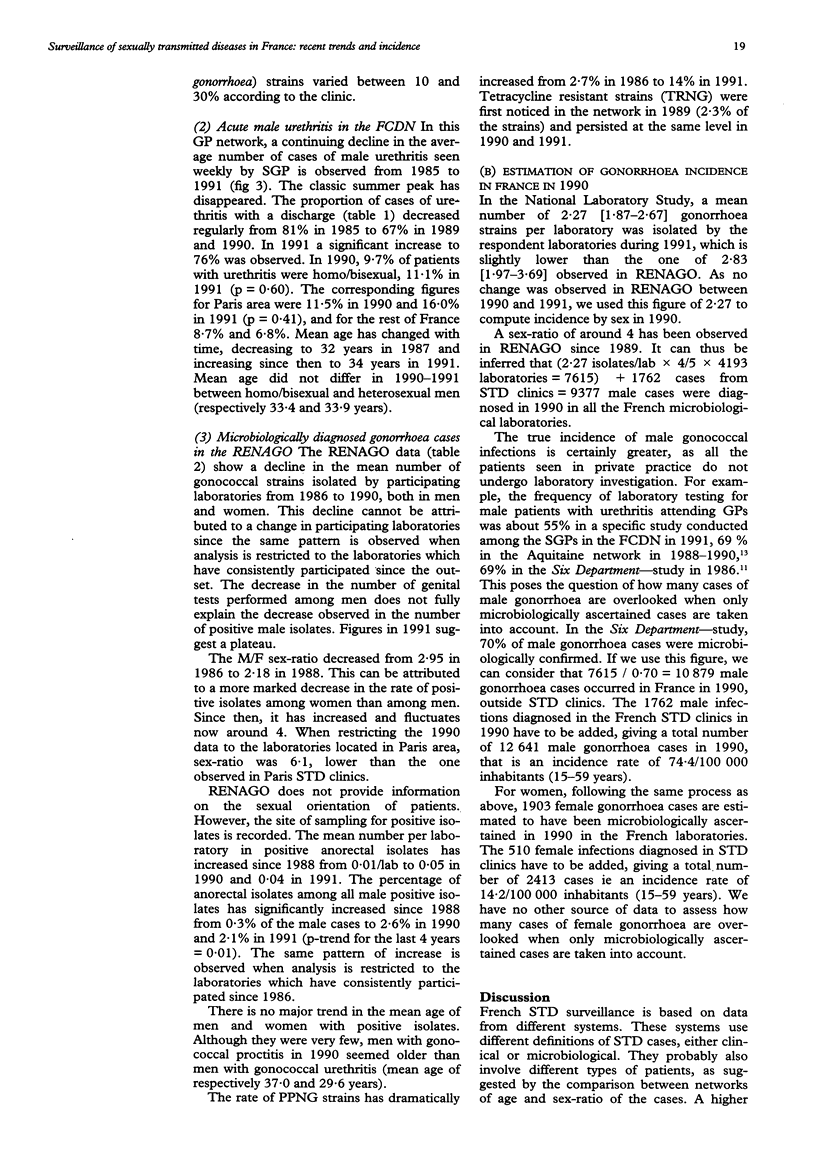
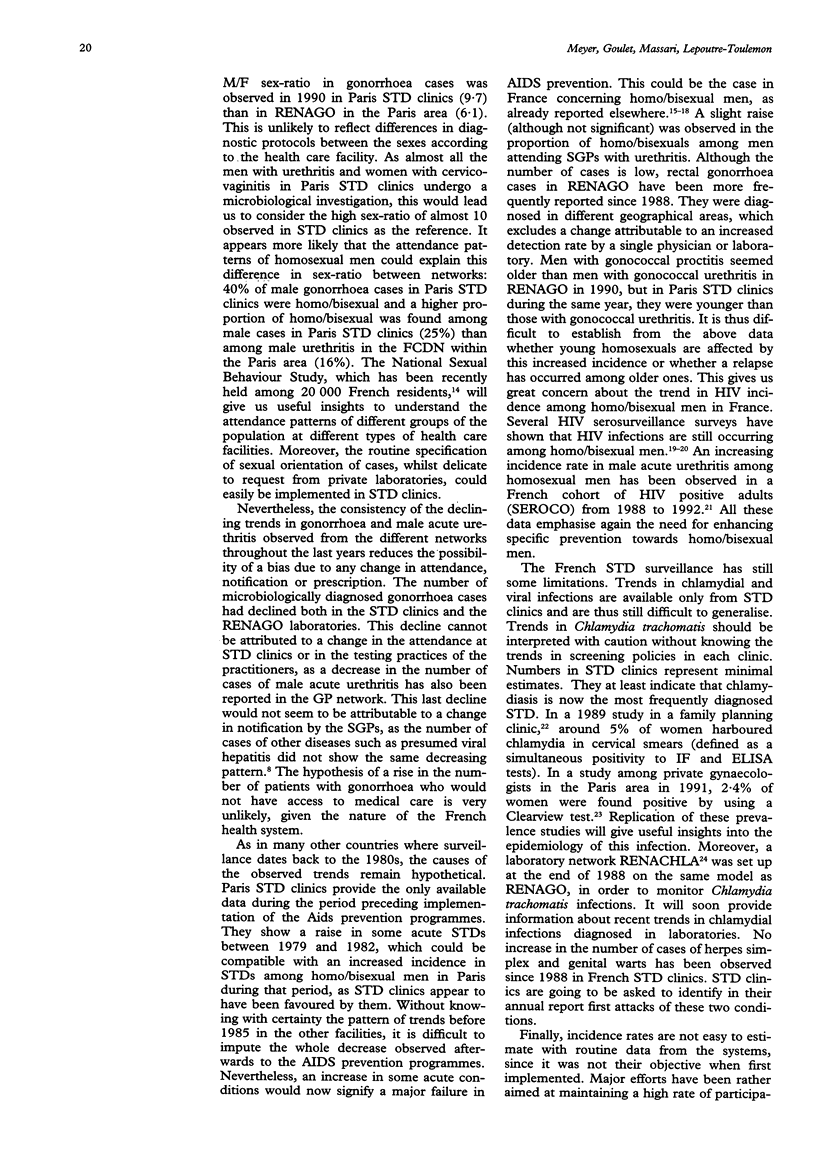
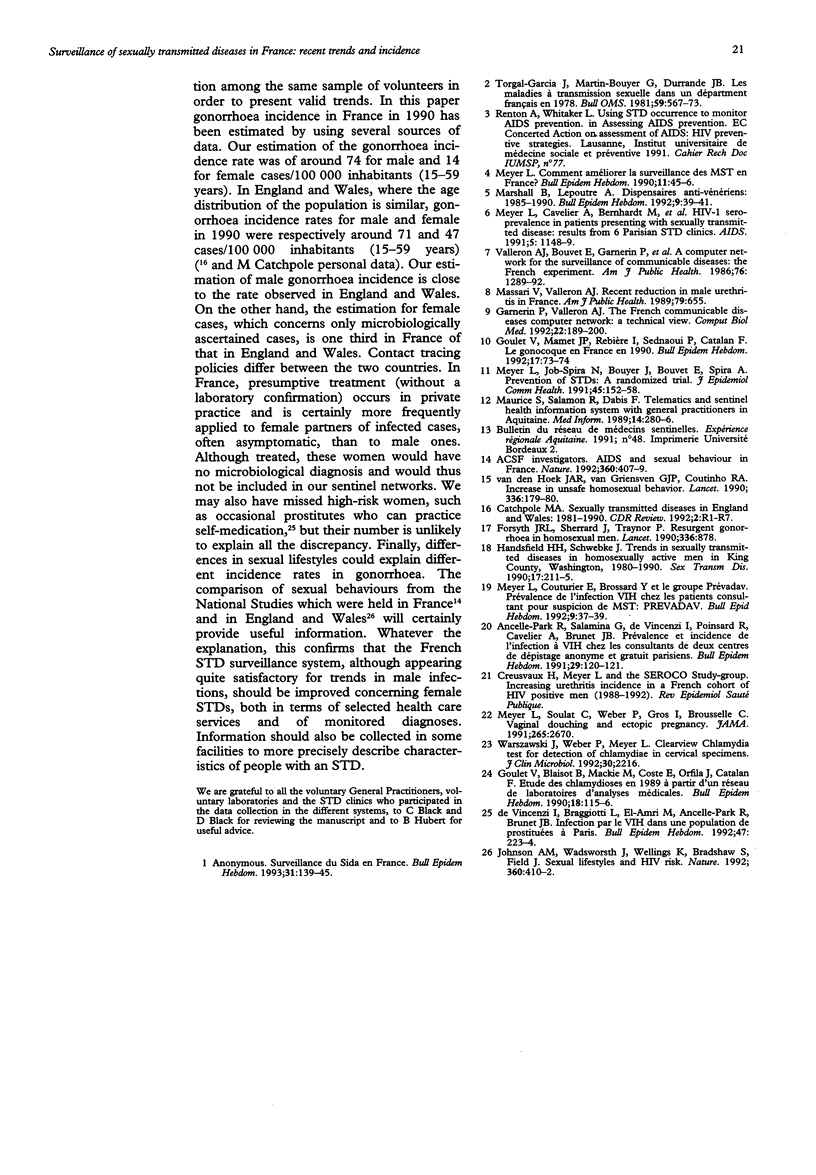
Selected References
These references are in PubMed. This may not be the complete list of references from this article.
- Forsyth J. R., Sherrard J., Traynor P. Resurgent gonorrhoea in homosexual men. Lancet. 1990 Oct 6;336(8719):878–878. doi: 10.1016/0140-6736(90)92382-r. [DOI] [PubMed] [Google Scholar]
- Garnerin P., Valleron A. J. The French communicable diseases computer network: a technical view. Comput Biol Med. 1992 May;22(3):189–200. doi: 10.1016/0010-4825(92)90015-f. [DOI] [PubMed] [Google Scholar]
- Handsfield H. H., Schwebke J. Trends in sexually transmitted diseases in homosexually active men in King County, Washington, 1980-1990. Sex Transm Dis. 1990 Oct-Dec;17(4):211–215. doi: 10.1097/00007435-199010000-00011. [DOI] [PubMed] [Google Scholar]
- Johnson A. M., Wadsworth J., Wellings K., Bradshaw S., Field J. Sexual lifestyles and HIV risk. Nature. 1992 Dec 3;360(6403):410–412. doi: 10.1038/360410a0. [DOI] [PubMed] [Google Scholar]
- Massari V., Valleron A. J. Recent reduction in male urethritis in France. Am J Public Health. 1989 May;79(5):655–655. doi: 10.2105/ajph.79.5.655. [DOI] [PMC free article] [PubMed] [Google Scholar]
- Meyer L., Brouselle C., Soulat C., Gros I. Vaginal douching and ectopic pregnancy. JAMA. 1991 May 22;265(20):2670–2671. [PubMed] [Google Scholar]
- Meyer L., Cavelier A., Bemhardt M., Bohbot J. M., Brunet H., Fabrizzi V., Franceschini P., Helal H., Mertz J. P., Morel P. HIV-1 seroprevalence in patients presenting with sexually transmitted disease (STD): results from six Parisian STD clinics. AIDS. 1991 Sep;5(9):1148–1149. doi: 10.1097/00002030-199109000-00021. [DOI] [PubMed] [Google Scholar]
- Meyer L., Job-Spira N., Bouyer J., Bouvet E., Spira A. Prevention of sexually transmitted diseases: a randomised community trial. J Epidemiol Community Health. 1991 Jun;45(2):152–158. doi: 10.1136/jech.45.2.152. [DOI] [PMC free article] [PubMed] [Google Scholar]
- Torgal-Garcia J., Martin-Bouyer G., Durrande J. B. Les maladies à transmission sexuelle dans un département français, 1978. Bull World Health Organ. 1981;59(4):567–573. [PMC free article] [PubMed] [Google Scholar]
- Valleron A. J., Bouvet E., Garnerin P., Ménarès J., Heard I., Letrait S., Lefaucheux J. A computer network for the surveillance of communicable diseases: the French experiment. Am J Public Health. 1986 Nov;76(11):1289–1292. doi: 10.2105/ajph.76.11.1289. [DOI] [PMC free article] [PubMed] [Google Scholar]
- Warszawski J., Meyer L., Weber P. CLEARVIEW Chlamydia test for detection of chlamydiae in cervical specimens. J Clin Microbiol. 1992 Aug;30(8):2216–2216. doi: 10.1128/jcm.30.8.2216-.1992. [DOI] [PMC free article] [PubMed] [Google Scholar]
- van den Hoek J. A., van Griensven G. J., Coutinho R. A. Increase in unsafe homosexual behaviour. Lancet. 1990 Jul 21;336(8708):179–180. doi: 10.1016/0140-6736(90)91700-k. [DOI] [PubMed] [Google Scholar]


